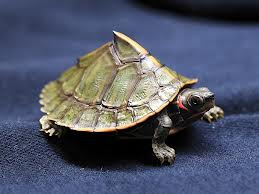Manas National Park is in the foothills of the Himalayas, in the Indian state Assam in India. This national park is not only a Wildlife Sanctuary, but also UNESCO natural World Heritage Site, apart from that it is a Project Tiger Reserve, an Elephant Reserve and even a Biosphere Reserve. This national park is adjoining with the Royal Manas National Park. Here in this park, one will get to see some rare , endangered and endemic species such as, Assam Roofed Turtle, Pygmy Hog, Golden langur and Hispid Hare. Manas is mainly famous for its huge population of wild water buffalo.
 |
| Manas National Park |
The name of this national park was derived from the Manas River, which was named after Manas, the serpent Goddess. The river Manas is one of the main tributary of the Bramhaputra, which flows through the heart of this national park.
In the core of the National Park is the only forest village known as Agrang, apart from that there are more 56 villages around this park, where some way or the other, they are depend on this park.
Geography of the Park
Five districts falls under this park, there are Kokrajhar, Chirang, Baksa, Udalgiri, Darrang in Assam, India.
This park is mainly divided into three ranges, Panbari, is the western range, then Bansbari is the central range, which is near Barpeta road, and Bhuiyapara is the eastern range which is near Pathsala.
Located in the Eastern Himalayan foothills, Manas, has got a very dense forest. The major tributary of the Bramhaputra is the Manas river, which flows through this park, this river flows through the western park of the park, further it splits into two river namely Beki, Bholkaduba.
Climate
Here, the minimum temperature is around 15 degree Celsius and the maximum temperature is around 37 degree Celsius. This place receives the maximum rainfall between the months of May and September, the annual rainfall this place receives around is 333 cm.
Biomes
Mans has two major Biomes:
-
The grassland Biomes, which consists of wild Asian Buffalo, bengal florican, pygmy Hog and Indian rhinoceros.
-
The forest Biomes consists of capped langur, wild pig, sambar, wild pig, Malayan and black giant squirrel.
Flora
Vegetation
Between he borders of the Indo Gangetic and Indo Malayan biogeographical realms lies the Burma Monsoon Forest of Manas, which is also the part of the Bramhaputra Valley Biogeographic Province.
 |
| Arundo Donax |
The main vegetation here are
-
In the northern part is the Sub-Himalayan Light Alluvial Semi-Evergreen Forests.
-
the most common type is the East Himalayan mixed Moist and Dry Deciduous Forest.
-
Low Alluvial Savanna Woodland, and
-
Assam Valley Semi- Evergreen Alluvial Grasslands, which almost covers 50% of the park
In the core zone of Manas, almost 543 plant species are recorded in which there are 374 species of dicotyledon which includes 89 trees, 139 species of monocotyledons and 30 species of Pteridophytes and Gymnosperms.
 |
| Bombax Ceiba |
Some of common trees in the park included Syzgium cumini, Bombax ceiba, Trewia polycarpa, Arundo Donax, Oroxylum indicum, Bauhinia purpurea and many more.
Fauna
Manas has about 55 species of mammals, birds of 380 species, reptiles of 50 specie, 3 species of amphibians. Among them 31 mammals are threatened.
 |
| Jungle Fowls |
This sanctuary has Barking Deer, Indian Rhinoceros, Gaur, Asian Elephants, Asian Water Buffalo, Indian Tigers, Leopards, Slow Loris, Hollock Gibbon, Assamese Macaques and many more.
This park is also famous for as it has some rare species which are not found in any part of the world, such as, Hispid Hare, Assam Roofed Turtle, Pygmy Hog, Golden Langur.
 |
| Assam Roofed Turtle |
This national park is the home of 450 species of birds and interestingly it has the large number of Bengal Florician. Some of the birds includes are Bulbuls, Jungle fowls, Fishing Eagles, Falcons, Ospreys, Brahminey Duck, Egrets, Pelicans.
Tourist Interest
Tourist here will be able to enjoy, the Elephant Rides, the Jeep Jungle Safari, river rafting, Bird Watching, Manas nature Trails and Treks.
No comments:
Post a Comment